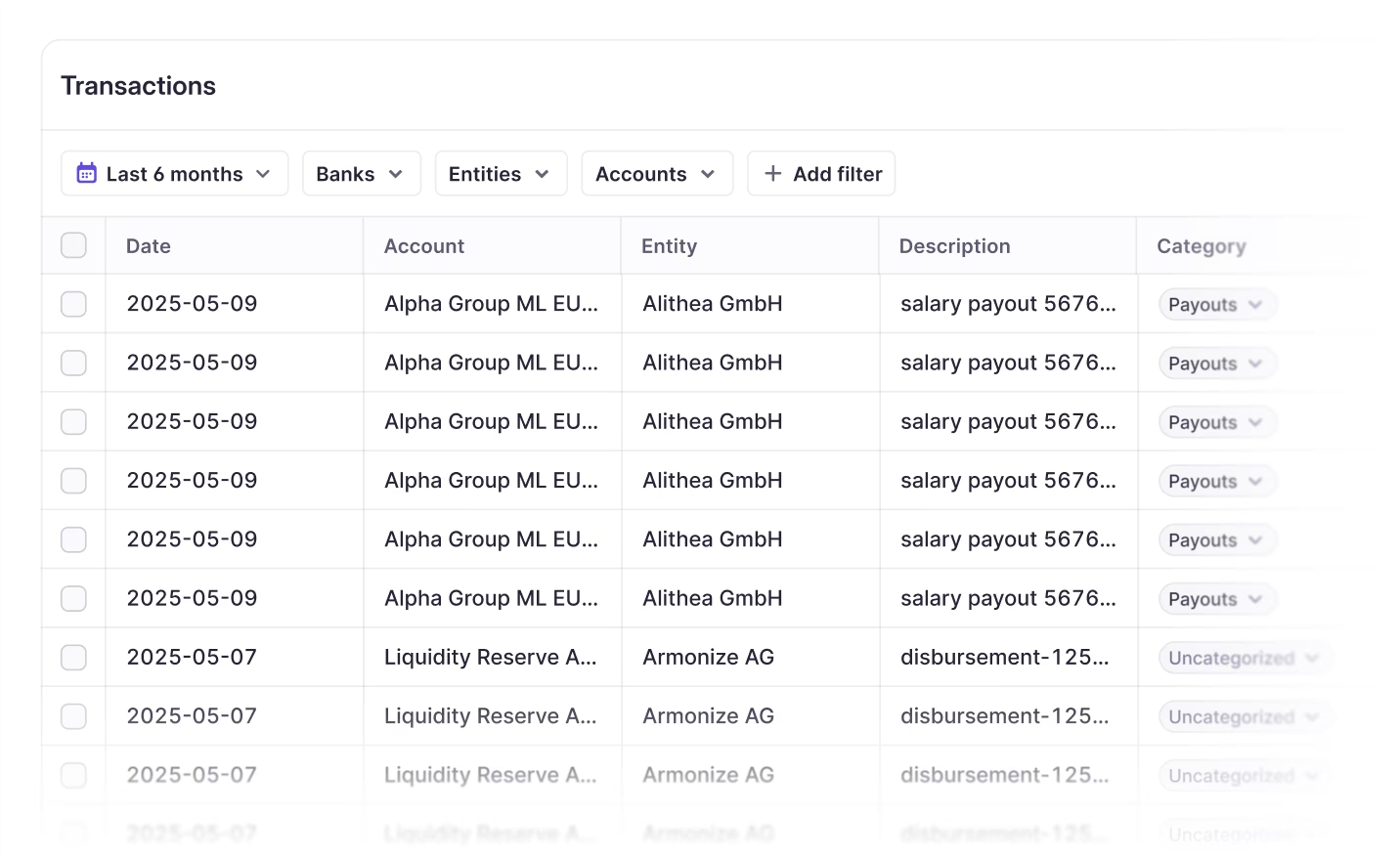What is a general ledger?
The general ledger (GL) is the comprehensive record of all your financial activities.

Introduction to the general ledger
The general ledger is the main repository for all your financial transactions. It provides a detailed record so you can track your performance and prepare financial statements including the balance sheet and income statement.
General ledgers are often located within an ERP system like Oracle NetSuite or Microsoft Dynamics 365. An ERP system lets you integrate and manage core business processes, including finance, accounting, supply chain, and human resources. The general ledger is typically a key component of the ERP's finance module.
The role of the general ledger
The general ledger is used to:
- Ensure accurate financial reporting by maintaining a detailed record of all transactions.
- Provide a clear audit trail for internal and external audits.
- Help you make informed decisions by providing a comprehensive view of your financial health.
- Help you comply with accounting standards and regulations.
How the general ledger is structured
The GL is organized into accounts, which represent a specific aspect of your finances. These fall into five main categories:
- Assets: Resources owned by your company, such as cash, inventory, and property.
- Liabilities: Obligations your company owes to external parties, such as loans, accounts payable, and mortgages.
- Equity: For example, your shareholders’ interest in the company, such as retained earnings and common stock.
- Revenue: Income earned from your core business operations.
- Expenses: Costs incurred in the process of earning revenue such as salaries and rent.
Double-entry bookkeeping
The general ledger operates on the principle of double-entry bookkeeping. This ensures the accounting equation (Assets = Liabilities + Equity) remains balanced. Every financial transaction affects at least two accounts: one account is debited, and another is credited, with the total debits equaling the total credits.
For example, when a company makes a sale on credit:
- Accounts Receivable is debited, increasing the asset.
- Sales Revenue is credited, increasing the revenue.
By reflecting the dual impact you ensure that the financial statements created from your general ledger provide a true and balanced view of your financial position.
Posting to the GL
Transactions are initially recorded in a journal and the process of transferring these entries to the GL is known as posting. This involves:
- Determining which accounts are affected by the transaction.
- Entering the debit and credit amounts in the appropriate accounts.
- Adjusting the balances of the affected accounts to reflect the new transaction.
Subsidiary ledgers and control accounts
To manage detailed information companies often use subsidiary ledgers for specific accounts like accounts receivable, accounts payable, and inventory. Compared to the GL, which includes summary information, subsidiary ledgers provide detailed transaction information, for example:
- The accounts receivable subsidiary ledger contains detailed information on each customer’s transactions.
- The accounts receivable control account in the general ledger shows the total balance of all accounts receivable.
Trial balance
At the end of an accounting period, a list of all GL accounts and their balance is prepared. This is the trial balance and its purpose is to ensure that total debits equal total credits, verifying the accuracy of your bookkeeping.
Financial statements
The GL is the source you use for preparing your financial statements, which include:
Balance sheet
This shows your company’s financial position at a specific point in time, detailing assets, liabilities, and equity.
Income statement
This summarizes revenues and expenses over a period, showing your overall profitability.
Statement of cash flow
This reports on cash inflow and outflow, categorizing them into operating, investing, and financing activities.
Modern general ledger systems
Today, most companies use digital accounting or ERP systems for their general ledger. These automate many aspects of ledger management, from recording transactions to generating financial reports, enhancing accuracy, efficiency, and ease of use.
Integrating the general ledger with an ERP system helps to provide a comprehensive view of the company's financial health, provided that the ERP system is also integrated with the company's banking partners.
How Atlar can help with accounting
Streamlined accounting processes are central to managing a company's finances efficiently. The Atlar platform helps you modernize accounting processes with direct connections to over 40 major banks and counting, plus a number of key payment providers, expense management tools, and more.
Atlar customers can reliably connect any number of banks, PSPs, and other tools to their ERP, streaming data and payments back and forth in real time. Our native integrations with ERP systems like Oracle NetSuite and Microsoft Dynamics 365 remove the need to navigate between multiple systems, transfer files, and manually enter payment details. Plus, you can leverage immutable audit trails for a detailed record of all actions, ensuring full transparency.
You can unsubscribe anytime.
Further reading
See Atlar in action.
Enter your work email to watch a live product demo.


